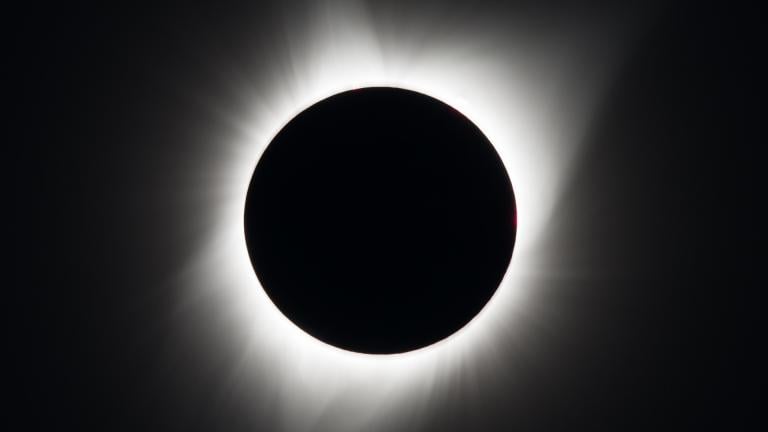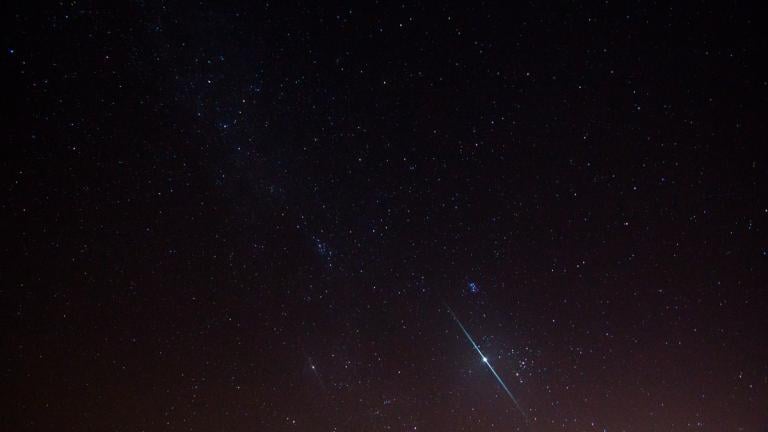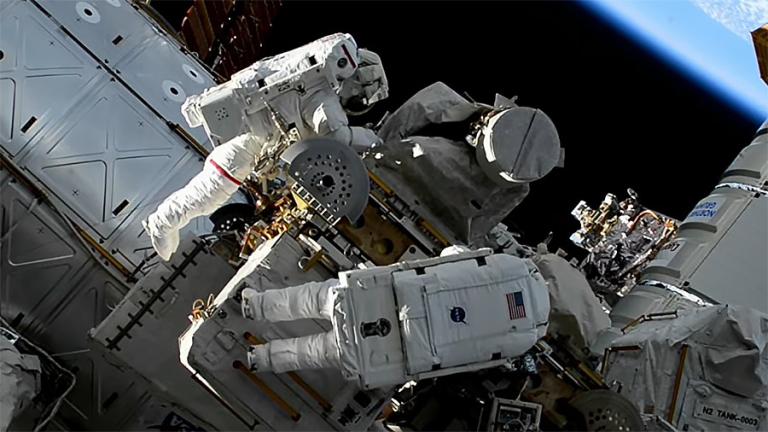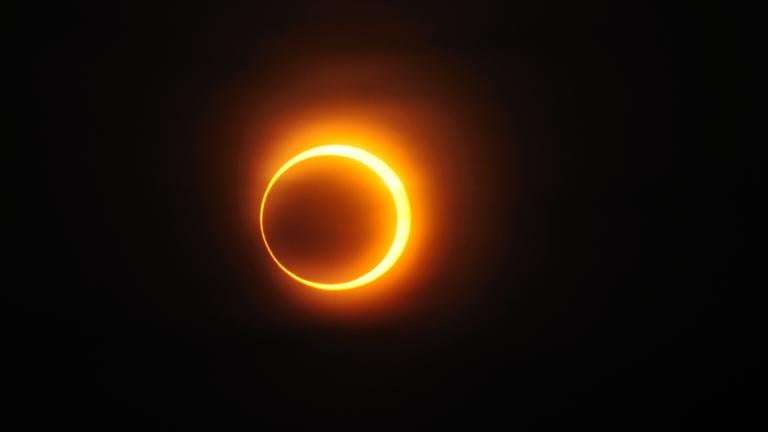 An artist's impression of what the surface of the planet Proxima b might look like. (M. Kornmesser / European Southern Observatory)
An artist's impression of what the surface of the planet Proxima b might look like. (M. Kornmesser / European Southern Observatory)
A planet that could potentially host life has been discovered orbiting Proxima Centauri, the star closest to our solar system, according to a report published Wednesday by more than 30 international scientists in the journal Nature.
The planet, dubbed Proxima b, is about the same size as Earth. Scientists say its location within the habitable zone of the red dwarf star it orbits suggets it may support liquid water, which could possibly harbor life forms.
“The host star is about a thousand times fainter than the sun, so in order to warm up the planet similar to Earth, it has to get very close,” said Michael Endl, a research scientist at the University of Texas at Austin and one of the study’s authors. “It’s at the right temperature to have liquid water stable. It’s not too hot to boil off and not too hot to totally freeze.”
In fact, the 4.3 million miles between the newly discovered planet and star it orbits represents roughly 5 percent of the distance between the Earth and sun.
Scientists haven't actually seen Proxima b. Instead, they discovered the planet by observing and measuring how the star it orbits “wobbles” from the gravitational pull of the planet.
“We’re not detecting the planet at all, which is interesting, but from the behavior of the star we can infer it has a planetary companion,” Endl said.
The changing velocity of the star repeated every 11.2 days, which is how the orbit period was determined.
 An artist's impression of the planet Proxima b orbiting the red dwarf star Proxima Centauri, which is about half as hot as the sun and the closest star to our solar system. (M. Kornmesser / European Southern Observatory)
An artist's impression of the planet Proxima b orbiting the red dwarf star Proxima Centauri, which is about half as hot as the sun and the closest star to our solar system. (M. Kornmesser / European Southern Observatory)
Scientists believe Proxima b doesn’t rotate as it orbits, which indicates that one side of the planet is constantly bathed in light while the other side remains dark. If life were to thrive on Proxima b, it would have to be on the side receiving light.
To determine whether the planet is truly suitable for life, Endl said researchers must find out whether it has an atmosphere or magnetic field, like Earth does.
Proxima b is the closest exoplanet, or planet orbiting a star other than the sun, to Earth. But at a little more than four light-years away, a trip to the planet wouldn’t be short – Endl said it would take about 80,000 years for a contemporary spacecraft to reach it.
Follow Evan Garcia on Twitter: @EvanRGarcia
Related stories:
 Expect to See an ‘Enhanced’ Perseid Meteor Shower This Week
Expect to See an ‘Enhanced’ Perseid Meteor Shower This Week
Aug. 10: Peak activity for the Perseids is expected to be Thursday and Friday, according to NASA. The best time to view the meteors is between midnight and dawn, no telescope required.
 Astronomer Mike Brown on Discovery of 9th Planet, Killing Pluto
Astronomer Mike Brown on Discovery of 9th Planet, Killing Pluto
May 17: He's best known for having killed Pluto, but astronomer Mike Brown may have found a replacement planet in the outer reaches of our solar system and it forms the basis of a new Adler Planetarium show.
 NASA Says Liquid Water on Mars Could be Evidence of Life Beyond Earth
NASA Says Liquid Water on Mars Could be Evidence of Life Beyond Earth
Sept. 28, 2015: Last week NASA said it would be making a major announcement today about a discovery on Mars. While some space fans might have been hoping it was about finding life, the announcement was about something almost as significant.








